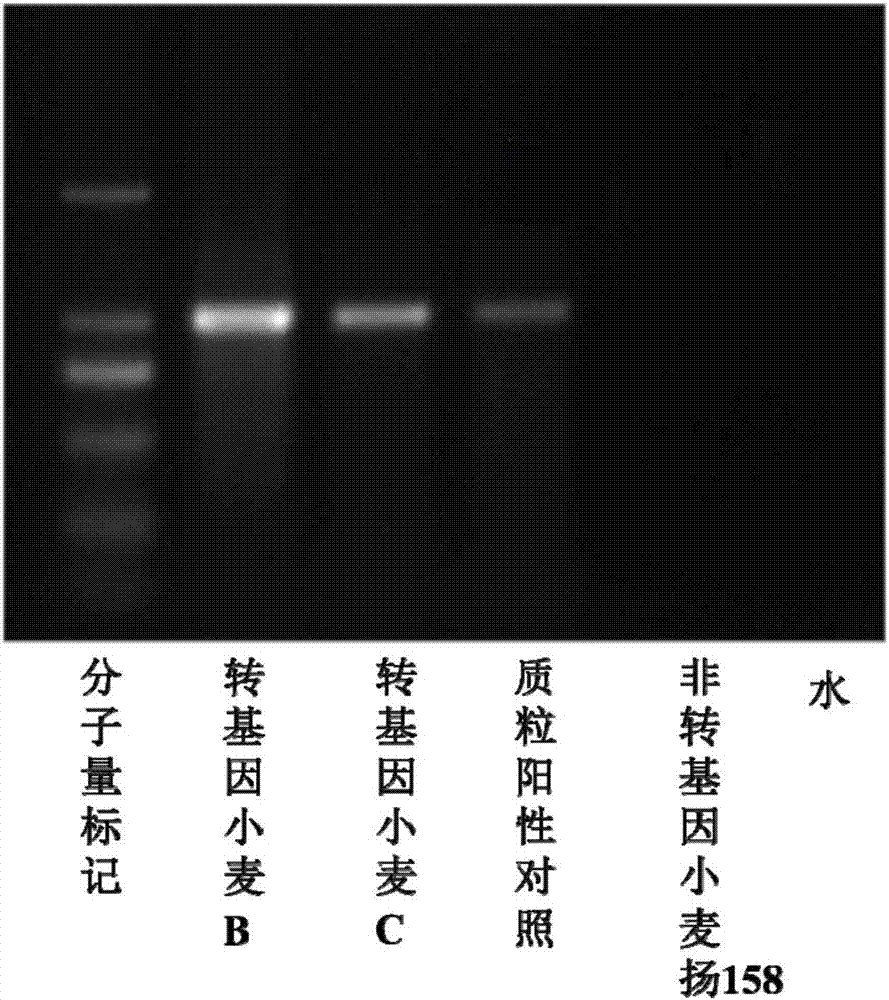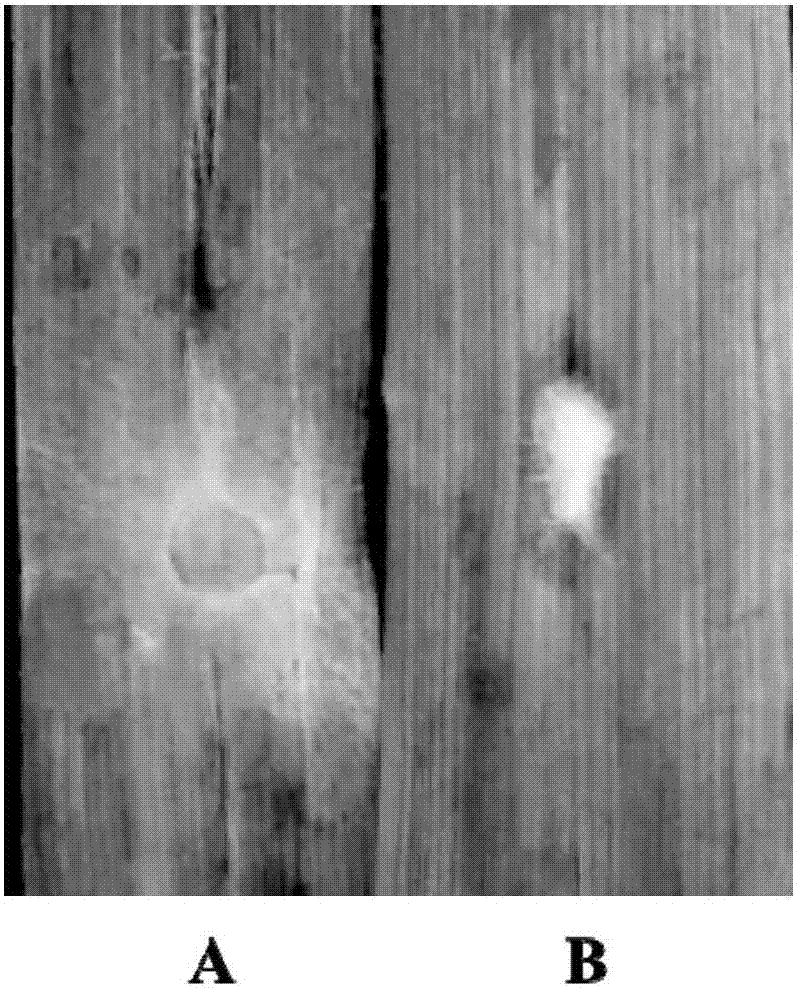A wheat hydrolyzed hydroxycinnamoyl-CoA ester protein tamag1166 and its coding gene and application
A technology of cinnamoyl coenzyme and tamag1166, which is applied in the field of genetic engineering to achieve the effect of improving resistance to scab
- Summary
- Abstract
- Description
- Claims
- Application Information
AI Technical Summary
Problems solved by technology
Method used
Image
Examples
Embodiment 1
[0024] Example 1: Obtaining TaMAG1166 protein.
[0025] During the flowering stage of the scab-resistant material Wangshuibai, the gibberella spore liquid was sprayed to the ears with a sprayer, and the spore liquid used was the conidia of strong pathogenic gibberella strains F4, F15, F17 and F34 in Jiangsu Province After inoculation, put the ears in plastic bags immediately to keep the humidity to ensure the onset of Gibberella. Wheat ears were taken 6 hours, 12 hours and 24 hours after inoculation, and inoculated with water as a control. Immediately after taking the materials, they were frozen with liquid nitrogen. Take 700mg of frozen ears of wheat, add 70mg of PVP, grind into powder in liquid nitrogen, add 5mL of 10% trichloroacetic acid / acetone, shake and mix, and precipitate at -20°C for 1 hour; centrifuge at 15,000g at 4°C for 15min, and resuspend the precipitate Place in 5 mL of cold acetone at -20°C for 2 hours; centrifuge at 15,000 g at 4°C for 15 minutes, suspend t...
Embodiment 2
[0026] Example 2: Obtaining the cDNA sequence encoding TaMAG1166 protein.
[0027] The total RNA from the panicle of the disease-resistant wheat germplasm Wangshuibai was extracted with the Trizol kit from Yingjun Company, reverse-transcribed with the reverse transcription kit from Promega Company, and single-stranded cDNA was synthesized. Using cDNA as a template, P1-F: 5'-GAGGAACTATGCTTCAACCCGC-3' (SEQ ID NO.3) and P1-R: 5'-TTCGCCCATCCAAAGTCTGG-3' (SEQ ID NO.4) as primers, PCR amplification, amplification system 25μL, including 5ng template, 5pmol each of P1 primer, 5nmol each of dATP, dTTP, dCTP and dGTP, 37.3nmol MgCl 2 , 0.5 units of DNA polymerase, 1x PCR buffer. The procedure of amplification is: denaturation at 94°C for 3 minutes; 30 cycles, denaturation at 94°C for 20 seconds, annealing at 58°C for 30 seconds, extension at 72°C for 1 minute; finally extension at 72°C for 5 minutes. Through PCR amplification, a 1341bp nucleotide sequence containing an open reading fr...
Embodiment 3
[0028] Embodiment 3: the scab resistance of transgenic TaMAG1166 wheat is improved
[0029]Using the panicle cDNA of Wangshuibai at the flowering stage as a template, primer P2 was used for PCR amplification. The pair of P2 primers is as follows: P2-F: 5'-AGTCTCTAGATTATTTGCCGACATGTCCTTGG-3' (SEQ ID NO.5); P2-R: 5 '-ATATTTCTAGACCCAAACATCAATCTCCTTCTCG-3' (SEQ ID NO. 6). After the amplified PCR product was digested with the restriction endonuclease XbaI, it was ligated with the PBI121 expression vector that had been digested with the same restriction endonuclease to obtain the overexpression plasmid of TaMAG1166 promoted by the CaMV35S promoter carrier. The constructed vector was transformed into DH5α Escherichia coli strain by heat shock method, and positive clones were obtained by screening with LB medium containing 50 μg / mL kanamycin. Referring to the materials and methods in the article published by Weeks in Plant Physiol No. 102, page 1077-1084 in 1993, the callus produced...
PUM
 Login to View More
Login to View More Abstract
Description
Claims
Application Information
 Login to View More
Login to View More - R&D
- Intellectual Property
- Life Sciences
- Materials
- Tech Scout
- Unparalleled Data Quality
- Higher Quality Content
- 60% Fewer Hallucinations
Browse by: Latest US Patents, China's latest patents, Technical Efficacy Thesaurus, Application Domain, Technology Topic, Popular Technical Reports.
© 2025 PatSnap. All rights reserved.Legal|Privacy policy|Modern Slavery Act Transparency Statement|Sitemap|About US| Contact US: help@patsnap.com



